
On Wednesday, the Board of Directors of the European Bank for Reconstruction and Development (EBRD) approved a loan of up to EUR80 million to Ukrnafta under state guarantees for the construction of about 100 MW of small gas-fired distributed power plants and cogeneration facilities. According to the bank’s website, the loan will help solve the problem of electricity shortages and ensure uninterrupted power supply to households and businesses.
The total cost of the project will be EUR103.8 million, and it will also be financed by a grant of up to EUR22 million expected to be provided by the Netherlands, the United States and other donors through the EBRD’s Special Crisis Response Fund, as well as a technical support grant of EUR1.8 million from other donors.
“Ukrnafta is Ukraine’s largest oil producer and operator of the national network of filling stations. In March 2024, the company took over the management of Glusco’s assets and operates 547 filling stations – 462 owned and 85 managed.
The company is implementing a comprehensive program to restore operations and update the format of its filling stations. Since February 2023, the company has been issuing its own fuel coupons and NAFTAKarta cards, which are sold to legal entities and individuals through Ukrnafta-Postach LLC.
“Ukrnafta holds 92 special permits for commercial development of fields. It has 1832 oil and 154 gas production wells on its balance sheet.
Ukrnafta’s largest shareholder is Naftogaz of Ukraine with a 50%+1 share. In November 2022, the Supreme Commander-in-Chief of the Armed Forces of Ukraine decided to transfer to the state a share of corporate rights of the company owned by private owners, which is now managed by the Ministry of Defense.
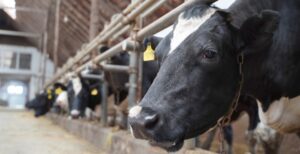
Moloko Vitchyzny LLC (Sumy region) is completing the construction of a dairy complex for 3,000 heads of cattle in Dubno district, Rivne region, the head of Rivne Regional State Administration Oleksandr Koval said on Facebook.
“For us, the new farm means not only additional budget revenues, but also 85 jobs. We are grateful to the business that, despite the war, is implementing such ambitious projects in Rivne region,” he emphasized.
Moloko Vitchyzny LLC promises to complete the construction of the dairy complex in the near future. In the summer of 2025, they intend to ship the first milk. The planned productivity of the herd is 39 thousand tons of milk per year. Moloko Vitchyzny LLC was registered in 2018 in Sumy region. The company included three dairy farms equipped with modern equipment. The total herd size is 7800 cattle, including 3100 heads of dairy Holstein cows.
According to the Opendatabot resource, the company’s revenue in 2024 amounted to UAH 470.12 million, net profit – UAH 102.9 million, debt – UAH 81.25 million, and assets were estimated at UAH 743.52 million. The farms employed 177 people. The authorized capital was UAH 52.2 million.
The beneficiaries of Moloko Vitchyzny LLC are Volodymyr Zayets (47.25%), Serhiy Zayets (3.32%), Serhiy Chyzhyk (42.44%) and Swiss citizens Wolf Philipp and Wolf Müller von Blumkencron Christian, who own 3.5% of the shares each.
Source: https://interfax.com.ua/
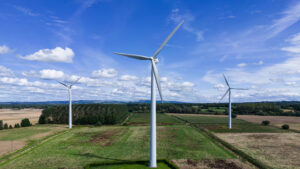
On December 10, 2024, the International Finance Corporation (IFC) of the World Bank Group plans to consider a EUR55 million loan to Concern Galnaftogaz to finance the construction of a 147 MW wind farm in Volyn region and technical support.
According to the IFC website, the total cost of the project is estimated at EUR 235 million. The 16-year loan will be granted to Wind Power G.I. Volyn LLC and Wind Power G.I. Volyn 3 LLC.
As reported earlier, the European Bank for Reconstruction and Development (EBRD) plans to approve a EUR62 million long-term loan to the above-mentioned LLC on 4 December 2024 for the construction of a 147 MW wind farm in Volyn region.
The wind farm is expected to produce about 380 GWh (380 million kWh) of renewable electricity with zero carbon emissions annually.
In February 2024, the Antimonopoly Committee of Ukraine (AMCU) allowed GNG Retail Limited (Cyprus) to acquire more than 50% of the authorized capital of Wind Power G&I Volyn LLC and Wind Power G&I Volyn 3 LLC.
According to public registers, GNG Retail Limited owns 89.5% of the two LLCs, and JSC ZNVKIF Rimini (in which Vitaliy Antonov owns 83.19%) owns 10.5%.
OKKO CEO Vasyl Danyliak announced the start of work on the construction of a wind farm in Volyn region in the fall of 2024. He explained the group’s plans to work in the renewable energy sector by the need to diversify its business, as the fuel market no longer foresees growth.
“Galnaftogaz operates one of the largest networks of OKKO filling stations, which includes more than 400 complexes with a network of catering facilities. The group also includes other businesses.
Vitaly Antonov’s GNG Retail Limited owns 90.25% of Concern Galnaftogaz shares. In October 2024, Avalia Investments Limited (Cyprus) of the founder and chairman of Concorde Capital, Igor Mazepa, became the owner of another 7.35% of the shares.
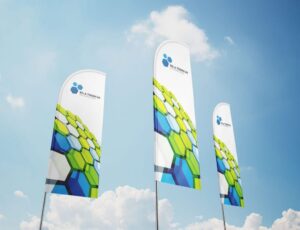
Industrial park (IP) “Belaya Tserkva” intends to start construction of two more factories in 2025, said Alexander Protsyuk, business development director of the industrial park.
“We now have five operating plants, three more are under construction and next year we will lay two more plants. That is, it will be more than 1 thousand jobs for Bila Tserkva, which is a significant achievement for a city of 250 thousand residents,” he said during the Ukrainian Automotive and Mobility Forum 2024 in Lviv.
Protsyuk recalled that since the beginning of the full-scale military invasion of Ukraine by the Russian Federation IP “Bila Tserkva” managed to attract three foreign investors – one of the world’s largest manufacturers of everyday goods company Uniliver, manufacturer of spare parts for electric vehicles InTiCa Systems, and a supplier of thin slab structures Finnish Peikko Group (whose plant is under construction – IF-U).
“InTiCa was the first company in Ukraine to obtain war risk insurance, and I will say that the quality of Ukrainian products is an order of magnitude higher than in its Czech division, where Ukrainians work, and in its Mexican division, which works for the American market. And now InTiCa is at a crossroads – they would very much like to move the plant from the Czech Republic to Ukraine, but they are worried about the Vienna risks. But I think we will expand their plant at our location,” Protsyuk said.
He also added that the work with Uniliver and Peikko Group lasted more than a year. “For these three successful cases we have four unsuccessful ones – these are large multinational companies, which for various reasons refused to enter or expand business in Ukraine,” – said the director of business development of IP ”Bila Tserkva.
Regarding the attractiveness of the park for investors, Protsyuk emphasized that for production cases location is certainly important (for example, in border areas), but equally important is access to high-quality but expensive labor and quick access to communications.
“These are two key things that attract investors – we don’t have to spend time on connecting to the networks, capacities are coordinated, and we have received funding from the government under the FE program. We have an unsuccessful history with USAID, but that was a good experience as well. We use all possible types of financing, including bank and grant financing,” Protsyuk said.
According to him today in the IP “Belaya Tserkva” of 36 hectares free 12 hectares, and in “Belaya Tserkva 2” – 24 hectares, and there is a built production facility of 2 thousand square meters, with connected communications in the neighborhood of Peikko and Uniliver.
“And we advise foreign investors who want to reduce the cost of production to keep up with global competition to think not only about investing in border cities like Lviv, for example, but also to shift a bit to the east, because the risks are not much bigger, but the advantages – good wages, freer access to communications, electricity – can offset these risks,” emphasizes Protsyuk.
“And we hope that next year we will have two more successful examples,” he summarized.
IP “Belaya Tserkva” and “Belaya Tserkva 2” – projects of the holding company UFuture of entrepreneur Vasily Khmelnitsky, were included in the Register of industrial parks in 2018.
On the developed territory of IP “Bila Tserkva” 41 square meters of production and warehouse premises were built and 14 residents were attracted, among which, in addition to Unilever, InTiCa Systems, Peikko and Pripravka relocated from Kharkiv since 2022, there is also a logistics depot of “Novaya Poshta”, a grain storage complex “Volytsya Agro”, a factory of electrical fittings Plank Electrotechnic, a manufacturer of high-rise equipment for construction work Virastar.
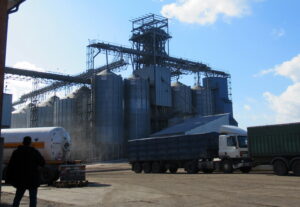
In 2024, TAS Agro invested $15 million in new equipment and infrastructure, and in 2025 it will continue to upgrade it, with livestock farming, design of bioethanol and biogas plants, and expansion of the land bank as priorities, the company’s CEO Oleg Zapletnyuk said in an interview with Forbes Ukraine.
“Over the past year, we have restarted the company (…) We have attracted financing for equipment. The money was used to improve working conditions and operational activities. Our strategy does not yet include a sharp increase in assets, so we are lending on a limited basis. Our focus is on increasing efficiency,” he said.
According to the CEO of the agricultural holding, TAS Agro purchased 14 John Deere tractors, 167 units of trailed equipment, loaders, seeders, manipulators, 45 Renault Duster pickups for agronomists, and 6 buses for transportation of employees in the 2024 season.
In addition, TAS Agro has begun building modern workshops and offices in the regions of its presence, and has set up service centers to repair equipment in the field.
In 2025, the agroholding intends to continue updating its equipment and complete the creation of anchor facilities in clusters: offices, warehouses, gas stations, for which it will allocate $7 million.
At the same time, the updated technology park allowed the agricultural holding to adjust its tillage technology and switch to deep loosening, vertical tillage, and strip-till sowing of rapeseed and wheat instead of plowing.
“This helped us reduce emissions and receive up to $800,000 in carbon certificates as part of a program to reduce our carbon footprint. How does it work? Each production facility in the EU has an emissions quota, and if a company cannot meet it, it buys a certificate from those who have reduced emissions on the stock exchange. This is a pretty good way for Ukrainian agricultural companies,” said Mr. Zapletniuk.
The agricultural holding has prioritized livestock production. In October 2024, TAS Agro transferred the buffalo farm TASbio to the management of TAS Agro. It produces cheeses that are sold in Le Silpo, Goodwine and Wine Time.
The agricultural holding plans to invest in the modernization of the dairy farm in 2025. “TAS Agro intends to build another farm for 1200 free-range cows, work with herd genetics, and introduce new approaches to feed production. In addition, the agroholding plans to improve herd housing and equip cattle facilities with climate control. Mr. Zapletnyuk added that Roshen buys milk from the agricultural holding mainly.
The agroholding plans to build bioethanol and biogas plants on the basis of dairy farms to create a closed production cycle.
“As for the energy sector, we are just developing a project. We will implement it in several stages by the end of 2027. The preliminary estimate of investments in biogas, bioethanol, and farm expansion is up to $15 million,” said Zapletniuk.
In addition, in 2024, TAS Agro bought an elevator with a storage capacity of 40 thousand tons in Chernihiv region. Along with it, a seed plant was sold, which also has a storage capacity of 10 thousand tons. The acquired assets, according to the CEO, will allow the agricultural holding to solve the storage problem and improve logistics. “TAS Agro plans to launch the acquired seed plant, which will produce wheat and soybean seeds.
At the same time, TAS Agro bought 2.5 thousand hectares of corporate rights in Vinnytsia region for long-term lease in the 2024 season. The plan for the next year is to expand the land bank by at least 10 thousand hectares to 90-95 thousand hectares.
Thanks to the resumption of the work of Ukrainian seaports, the agricultural holding has abandoned plans to acquire its own fleet and is no longer considering such investments, summarized the CEO of TAS Agro.
TAS Agro was established in 2014. Its land bank includes 88 thousand hectares in Chernihiv, Sumy, Kyiv, Vinnytsia, Kirovohrad and Mykolaiv regions. The holding specializes in crop production, with elevators with a capacity of about 250 thousand tons. The livestock business is represented by a cattle herd of 5.5 thousand heads, of which 2.5 thousand heads are dairy cattle.
According to the Opendatabot resource, the company’s revenue in 2023 amounted to UAH 2.588 billion, net profit – UAH 155.842 million, debt – UAH 1.2 billion, assets were estimated at UAH 1.8653 billion, and the number of employees – 129. The authorized capital is UAH 8 thousand.
The agricultural holding is part of the TAS group, which was founded in 1998. Its business interests include the financial sector (banking and insurance segments) and pharmacy, as well as industry, real estate, and venture capital projects.
The founder of TAS and the beneficiary of TAS Agro is Sergiy Tigipko.
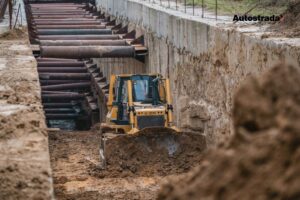
Avtostrada Group of Companies has resumed construction of the subway to the Vynohradar residential area in Kyiv, its press service has reported.
According to the press release, the construction of the Syrets-Pechersk (“green”) line is underway from the Syrets station. In total, the construction of two stations is planned – Mostytska and Prospekt Pravdy.
The section from Syrets station to Mostytska station will be laid in a closed way – by tunneling, and from Mostytska to Pravdy Avenue – in an open way.
The total length of the construction (from Syrets station to Pravdy Prospekt) is 3.78 km.
Atostrada continues construction of a two-tiered rectangular monolithic tunnel on the Mostytska – Pravdy Prospekt section. This design is due to the specifics of the infrastructure of a densely built-up residential area. A pit is being developed and a support system is being installed for further tunnel construction. A PVC membrane waterproofing system is being installed in the concrete areas left by the previous contractor, which can be restored even after the facility is commissioned. As noted, such waterproofing was used during the construction of a section of the tunnel between Lybidska and Demiivska metro stations. The finished sections of the tunnel are being backfilled with soil.
The facility includes six construction sites. Preparatory work is underway at other construction sites.
As the press service emphasizes, Avtostrada started the construction of the metro line to Vynohradar using its own working capital, without advances.
As reported, in August 2024, the Kyiv Metro utility company signed an agreement to continue construction of the Syretsko-Pecherska line in the direction of the Vynohradar residential area. The winner of the tender was Avtostrada Group LLC. The term of the works is set at 30 months and their cost is UAH 13 billion 785 million. The procurement was conducted on the Prozorro electronic public procurement platform.
According to the Kyiv City State Administration, the right turnaround tunnel has already been built with a length of almost 1,250 meters from Mostytska station to Syrets station. In addition, the construction of the main structures of the distillation ventilation unit has been completed. The wall-in-soil method of enclosing structures and the metal structures for the pit have also been partially installed. The main structures of the combined traction substation were constructed, and two-tier tunnels were partially constructed.
In December 2023, Kyiv Metro terminated the contract with Kyivmetrobud JSC in court due to the failure to meet the deadlines for construction work. The court is considering the recovery of a part of the prepayment, the use of which is not confirmed by the relevant acts of work performed, as well as penalties.